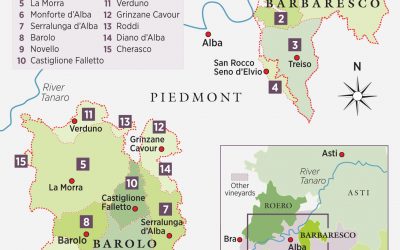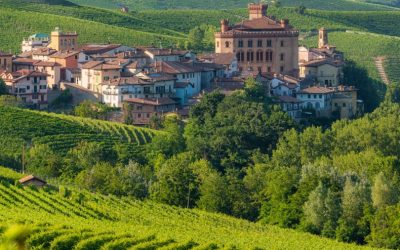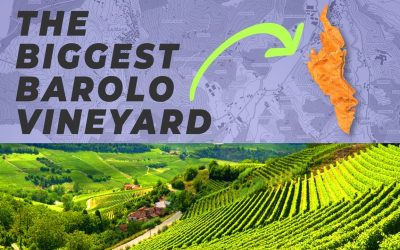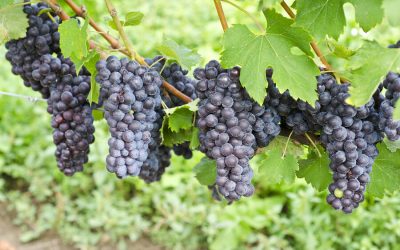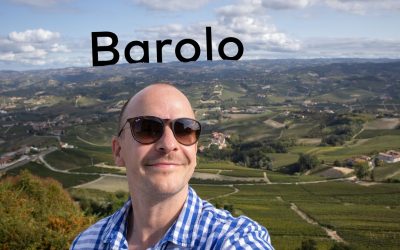What are the rules for Barolo wine?
🍷 In this section, you can provide a brief introduction about Barolo wine, its origins, and why it’s known as the “King of Wines.” Discuss the region of Barolo, located in the Piedmont area of Italy, and introduce the importance of Nebbiolo grapes in the production of Barolo.
What are the rules for Barolo wine?
Barolo, known as the “King of Wines and Wine of Kings”, is produced under strict regulations set by Italy’s highest wine classification, the Denominazione di Origine Controllata e Garantita (DOCG). These rules mandate that Barolo must be made entirely from the Nebbiolo grape, grown within the delimited Barolo production area in Piedmont. Harvesting begins in October and only the healthiest, fully-ripe grapes are selected. The wine must undergo a sufficient maceration period during fermentation to extract enough tannins and color. Furthermore, Barolo must be aged for a minimum of 38 months, 18 of which in oak barrels. Riserva Barolos require a longer aging period of at least 62 months.
The distinct characteristics of Barolo, as stipulated by the DOCG regulations, include a garnet-red color, which tends to turn orange as the wine ages. It has complex and intense aromas of rose, cherry, licorice, and truffle, often with underlying notes of tobacco and leather. Barolo is full-bodied on the palate, with high tannins and acidity, and flavors that mirror the nose, with additional hints of dried fruit, spice, and earthy undertones. The wine has a minimum alcohol content of 13% and a significant aging potential, with the best examples maturing for up to 50 years.
Barolo For Beginners
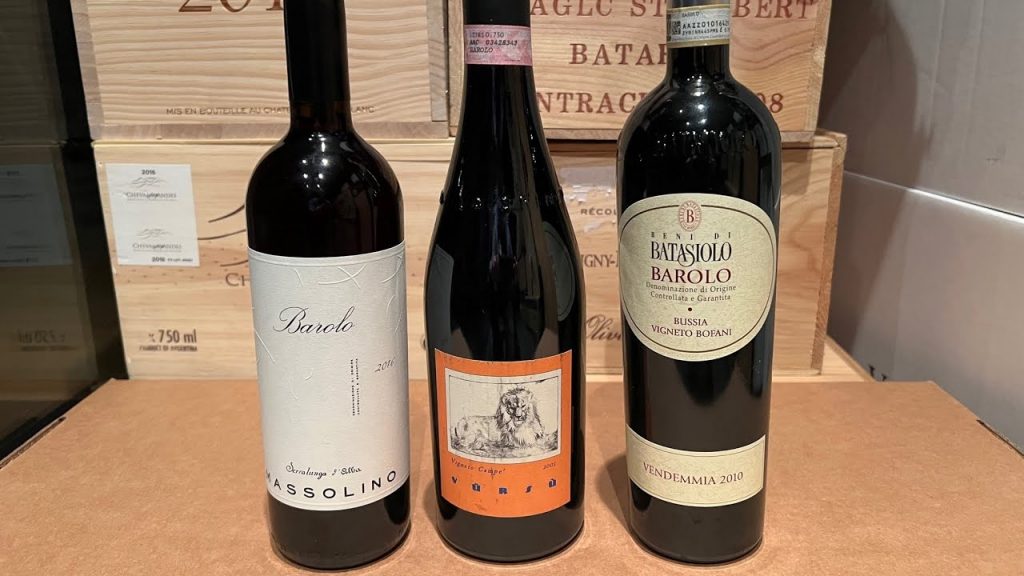
Understanding DOCG: The Highest Level of Italian Wine Classification 🎖️
In Italy, the quality and authenticity of its world-renowned wines are maintained through a stringent classification system. The Denominazione di Origine Controllata e Garantita (DOCG) represents the pinnacle of this system, showcasing the pinnacle of Italian viticulture. Wines labeled with the DOCG classification represent not just excellent quality, but also a deep connection to the unique geographical region or ‘terroir’ from which they originate.
The DOCG classification is the highest recognition an Italian wine can achieve and it guarantees consumers that stringent quality processes and rigorous specifications have been followed in the production of the wine. These criteria encompass a wide array of elements, from grape variety, yield limits, and alcohol content, to aging requirements and tasting assessment.
It’s important to understand that the DOCG designation doesn’t just refer to the quality of the end product. It also requires that the entire production process follows specific rules set out by Italian wine law. This includes where the grapes are grown, how they are cultivated and harvested, and even the specific techniques used during winemaking.
Therefore, a DOCG status implies that a wine is not only of high quality, but that it is also an authentic expression of its geographical origin. This is why wines with DOCG status are often highly sought after by connoisseurs and collectors alike.
In the case of Barolo, this prized DOCG status is certainly fitting. Known as the ‘King of Wines’ and ‘Wine of Kings‘, Barolo, made from the Nebbiolo grape, is one of Italy’s most prestigious wines. Produced in the Langhe hills of Piedmont, Barolo is subjected to one of the longest aging requirements in Italy to achieve the DOCG status. The strict production rules and aging requirements contribute to its unique and complex character, a true reflection of its prestigious DOCG status.
The Terroir of Barolo: The Role of Geography and Climate 🌍
Barolo wines are synonymous with their terroir. The region is located in the Piedmont area of northern Italy, nestled within the hills of Langhe. This region is sheltered by the Alps, creating a unique microclimate that is ideal for growing the Nebbiolo grape, the only varietal allowed in Barolo wines.
Geology: Barolo is divided into two main areas: the Serralunga Valley and the Central Valley. The Serralunga Valley is characterized by its chalky, calcareous soils which produce wines with powerful structure and high aging potential. The Central Valley, on the other hand, is comprised of Tortonian soil, rich in clay and marl, that results in more aromatic, softer, and earlier maturing wines.
Climate: Barolo has a continental climate with hot summers and cold winters. However, the presence of the Tanaro River and the surrounding mountains create a unique microclimate that often sees morning fogs – beneficial for the slow ripening of Nebbiolo grapes. This allows for a long growing season that imbues the grapes with complex flavors and high acidity.
Altitude: The vineyards in Barolo are located at altitudes ranging from 200 to 400 meters above sea level. The varying elevations and the aspects of the vineyards significantly influence the wines, contributing to their complexity. Higher altitude vineyards often produce wines with higher acidity and more pronounced floral aromas.
Vineyard Sites: Barolo is divided into several communes, each having its own unique characteristics. For example, the wines from Barolo and La Morra are known for their elegance and perfume, whereas those from Serralunga d’Alba and Monforte d’Alba are more structured and robust.
Understanding the terroir of Barolo is essential to fully appreciate these wines. Each element – soil, climate, altitude, and vineyard site – plays a crucial role in shaping the style, flavor, and aging potential of Barolo wines. By grasping these factors, wine enthusiasts can better understand the diversity and complexity that make Barolo one of the world’s most revered wines.
Strict Production Rules: From Vine to Bottle 🍇
Barolo is not just a wine; it’s a testament to tradition and a strict set of rules that govern every aspect of its production. These rules are set forth by the Denominazione di Origine Controllata e Garantita (DOCG), the highest classification for Italian wines.
First, Barolo must be made entirely from the Nebbiolo grape, a variety known for its tannic structure, high acidity, and age-worthy nature. The vineyards must be located within the delimited Barolo production area, which includes 11 municipalities in the Piedmont region.
The cultivation and harvesting practices also adhere to stringent standards. There are limits on the maximum yield of grapes, ensuring a concentration of flavors. Harvest typically begins in October, and only the healthiest, fully-ripe grapes are selected.
After harvest, the fermentation process begins. According to the regulations, the maceration period (the time the grape juice is in contact with the skins) must be long enough to extract sufficient tannins and color. This period usually lasts for about 10-12 days.
One of the hallmarks of Barolo is its aging process. The wine must be aged for at least 38 months, 18 of which must be in oak barrels. Riserva Barolos require an even longer aging period of at least 62 months. This long aging process allows the tannins to soften and complex flavors to develop.
The Tasting Profile: Identifying Authentic Barolo 👃🍷
Authentic Barolo possesses certain distinct characteristics, as stipulated by the DOCG regulations. A typical Barolo exhibits a garnet-red color, which tends to turn orange as the wine ages. On the nose, it offers complex and intense aromas of rose, cherry, licorice, and truffle, often with underlying notes of tobacco and leather.
On the palate, Barolo is full-bodied and robust, with high tannins and acidity. The flavors often mirror the nose, with additional hints of dried fruit, spice, and earthy undertones. The minimum alcohol content should be 13% to ensure the proper balance of flavors.
One of the distinguishing features of Barolo is its aging potential. A good Barolo can age and evolve for decades, with the best examples maturing for up to 50 years. As the wine ages, it develops more nuanced and layered flavors, becoming even more complex and harmonious.
Conclusion: The Uncompromising Quality of Barolo 🏅
Barolo, often referred to as the “King of Wines and Wine of Kings”, is a testament to the uncompromising commitment to quality. The strict rules and regulations governing its production ensure that every bottle of Barolo lives up to its revered status. From its terroir-driven character to its age-worthy nature, Barolo embodies the essence of Italian winemaking tradition. Whether you’re a seasoned wine collector or a casual wine enthusiast, the experience of savoring a Barolo is a journey into the heart of Piedmont’s rich wine culture.
